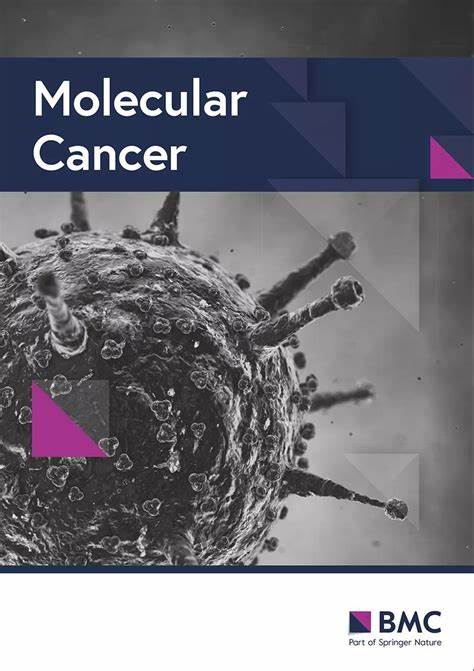Multifunctional gold nanoparticles: bridging detection, diagnosis, and targeted therapy in cancer
IF 33.9
1区 医学
Q1 BIOCHEMISTRY & MOLECULAR BIOLOGY
引用次数: 0
Abstract
Cancer remains a leading global health challenge, responsible for millions of deaths annually. Conventional therapies are hindered by systemic toxicity, drug resistance, and ineffective targeting of the tumor microenvironment (TME). Gold nanoparticles (AuNPs) have emerged as promising tools in oncology, offering unique plasmonic properties, high biocompatibility, and the ability to be engineered for multifunctional applications. Recent advancements include sustainable biogenic synthesis methods, precision targeting through ligands, aptamers, and peptides, and the development of theranostic platforms that integrate multimodal imaging with controlled drug and gene delivery. Additionally, AuNPs are being combined with therapies like photothermal-immunotherapy to remodel the TME, enhancing therapeutic efficacy. This review explores AuNP applications in cancer detection, diagnosis, and therapy, focusing on targeted drug/gene delivery to overcome chemoresistance, advanced biosensing tools for early detection, hybrid nanocarrier designs for TME penetration, and combinatorial platforms for integrating photodynamic, chemotherapy, and radiotherapy. It also addresses key translational barriers, such as protein corona dynamics, long-term biodistribution concerns, and the scalability of green synthesis methods. To facilitate clinical adoption, it emphasizes the need for GMP-compatible manufacturing, personalized nanomedicine through computational design, and standardized safety assessments. AuNPs represent a transformative approach to precision oncology, with the potential to integrate diagnostic and therapeutic functions into adaptable, real-time systems.多功能金纳米粒子:桥接检测,诊断和靶向治疗癌症
癌症仍然是全球健康面临的主要挑战,每年造成数百万人死亡。常规治疗受到全身毒性、耐药性和肿瘤微环境(TME)无效靶向的阻碍。金纳米颗粒(AuNPs)具有独特的等离子体特性、高生物相容性和多功能应用的能力,已成为肿瘤学中很有前途的工具。最近的进展包括可持续的生物合成方法,通过配体,适体和肽的精确靶向,以及将多模态成像与受控药物和基因传递相结合的治疗平台的开发。此外,AuNPs正在与光热免疫疗法等疗法联合使用,以重塑TME,提高治疗效果。本文综述了AuNP在癌症检测、诊断和治疗中的应用,重点是靶向药物/基因递送以克服化疗耐药,先进的生物传感工具用于早期检测,混合纳米载体设计用于TME穿透,以及整合光动力、化疗和放疗的组合平台。它还解决了关键的翻译障碍,如蛋白质电晕动力学、长期生物分布问题和绿色合成方法的可扩展性。为了促进临床应用,它强调需要与gmp兼容的制造,通过计算设计的个性化纳米药物,以及标准化的安全评估。aunp代表了精确肿瘤学的一种变革性方法,具有将诊断和治疗功能整合到适应性强的实时系统中的潜力。
本文章由计算机程序翻译,如有差异,请以英文原文为准。
求助全文
约1分钟内获得全文
求助全文
来源期刊

Molecular Cancer
医学-生化与分子生物学
CiteScore
54.90
自引率
2.70%
发文量
224
审稿时长
2 months
期刊介绍:
Molecular Cancer is a platform that encourages the exchange of ideas and discoveries in the field of cancer research, particularly focusing on the molecular aspects. Our goal is to facilitate discussions and provide insights into various areas of cancer and related biomedical science. We welcome articles from basic, translational, and clinical research that contribute to the advancement of understanding, prevention, diagnosis, and treatment of cancer.
The scope of topics covered in Molecular Cancer is diverse and inclusive. These include, but are not limited to, cell and tumor biology, angiogenesis, utilizing animal models, understanding metastasis, exploring cancer antigens and the immune response, investigating cellular signaling and molecular biology, examining epidemiology, genetic and molecular profiling of cancer, identifying molecular targets, studying cancer stem cells, exploring DNA damage and repair mechanisms, analyzing cell cycle regulation, investigating apoptosis, exploring molecular virology, and evaluating vaccine and antibody-based cancer therapies.
Molecular Cancer serves as an important platform for sharing exciting discoveries in cancer-related research. It offers an unparalleled opportunity to communicate information to both specialists and the general public. The online presence of Molecular Cancer enables immediate publication of accepted articles and facilitates the presentation of large datasets and supplementary information. This ensures that new research is efficiently and rapidly disseminated to the scientific community.
 求助内容:
求助内容: 应助结果提醒方式:
应助结果提醒方式:


